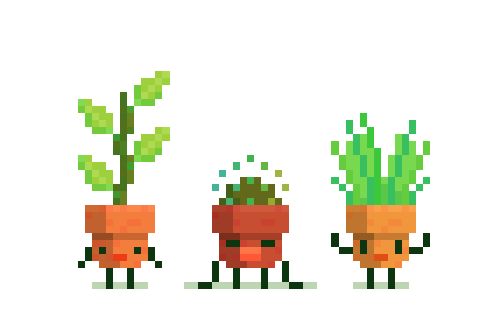this post was submitted on 28 Aug 2023
65 points (98.5% liked)
Houseplants
4652 readers
1 users here now
Welcome to /c/houseplants @ Mander.xyz!
In between life, we garden.

About
We're a warm and informative space for plant enthusiasts to connect, learn, and flourish together. Dive into discussions on care, propagation, and styling, while embracing eco-friendly practices. Join us in nurturing growth and finding serenity through the extraordinary world of houseplants.
Need an ID on your green friends? Check out: [email protected]
Get involved in Citizen Science: Add your photo here to help build a database of plants across the entire planet. This database is used by non-profits, academia, and the sciences to promote biodiversity, learning and rewilding.
Rules
- Don't throw mud. Be kind and remember the human.
- Keep it rooted (on topic).
- No spam.

Resources
Recommendations
Health
Identification
- PlantNet.org (see also: [email protected])
- Seek from iNaturalist
Light Information
- GrowLightMeter
- PlantLightDB
- HouseplantJournal (Scroll down.)
Databases
- Catalogue of Life
- Perenual.com
- The Garden.org Plants Database
- Useful Tropical Plants (Interactive Database Version)
- WorldFloraOnline
- USA-NPN
- Tom Clothier's Garden Walk and Talk
- Plants for a Future
- USDA Datasets
- Permapeople.org
- Temperature Climate Permaculture: Plant Index
- Natural Capital Plant Database
- Colorado Plant Database
- SEINet
- North American Ethnobotany Database
- BCSS Field No. Lookup (collection site IDs for cacti and succulents)
- U Michigan Native Plant Database for Michigan by Region
FOSS Tools
- Common House Plants API
- HappyPlants (Monitoring App)
- PlantGeek (Care Info App)
Similar Communities
DM us to add yours! :)
General
Gardening
- [email protected]
- [email protected]
- [email protected]
- [email protected]
- [email protected]
- [email protected]
- [email protected]
Species
Regional
Science
Sister Communities
Science and Research
Biology and Life Sciences
Plants & Gardening
Physical Sciences
Humanities and Social Sciences
Memes

founded 2 years ago
MODERATORS
you are viewing a single comment's thread
view the rest of the comments
view the rest of the comments

“The most common symptoms of nutrient deficiency are stunted growth and leaf discoloration. The position of the symptoms (distal, basal or intermediate) depends on the mobility of the nutrient inside the plant (young leaves competing with oldest leaves). ON TERMINAL BUDS: Ca & B ON YOUNG LEAVES: Cu. S, Fe & Mn ON OLD LEAVES: N, P, K, Mg, Zn & Mo (B) Boron: Discoloration of leaf buds. Breaking and dropping of buds. (CA) Calcium: Plant dark green. Tender leaves pale. Drying starts from the tips. Eventually leaf bunds die. (S) Sulphur: Leaves light green. Veins pale green. No spots. (Fe) Iron: Leaves pale. No spots. Major veins green. (Mn) Manganese: Leaves pale in color. Veins and venules dark green and reticulated. (Cu) Copper: Pale pink between the veins. Wilt and drop. (Z) Zinc: Leaves pale, narrow and short. Veins dark green. Dark spots on leaves and edges. (Mo) Molybdenum: Leaves light green/lemon yellow/orange. Spots on whole leaf except veins. Sticky secretions from under the leaf. (Mn) Magnesium: Paleness from leaf edges. No spots. Edges have cup shaped folds. Leaves die and drop in extreme deficiency. (K) Potassium: Small spots on the tips, edges of pale leaves. Spots turn rusty. Folds at tips.
(P) Phosphorus: Plant short and dark green. In extreme deficiencies turn brown or black. Bronze colour under the leaf. ( N ) Nitrogen: Stunted growth. Extremely pale color. Upright leaves with light green/yellowish. Appear burnt in extreme deficiency.” “THE COLOURS REPRESENTED ARE INDICATIVE THEY MAY VARY FROM PLANT TO PLANT”
Awesome!